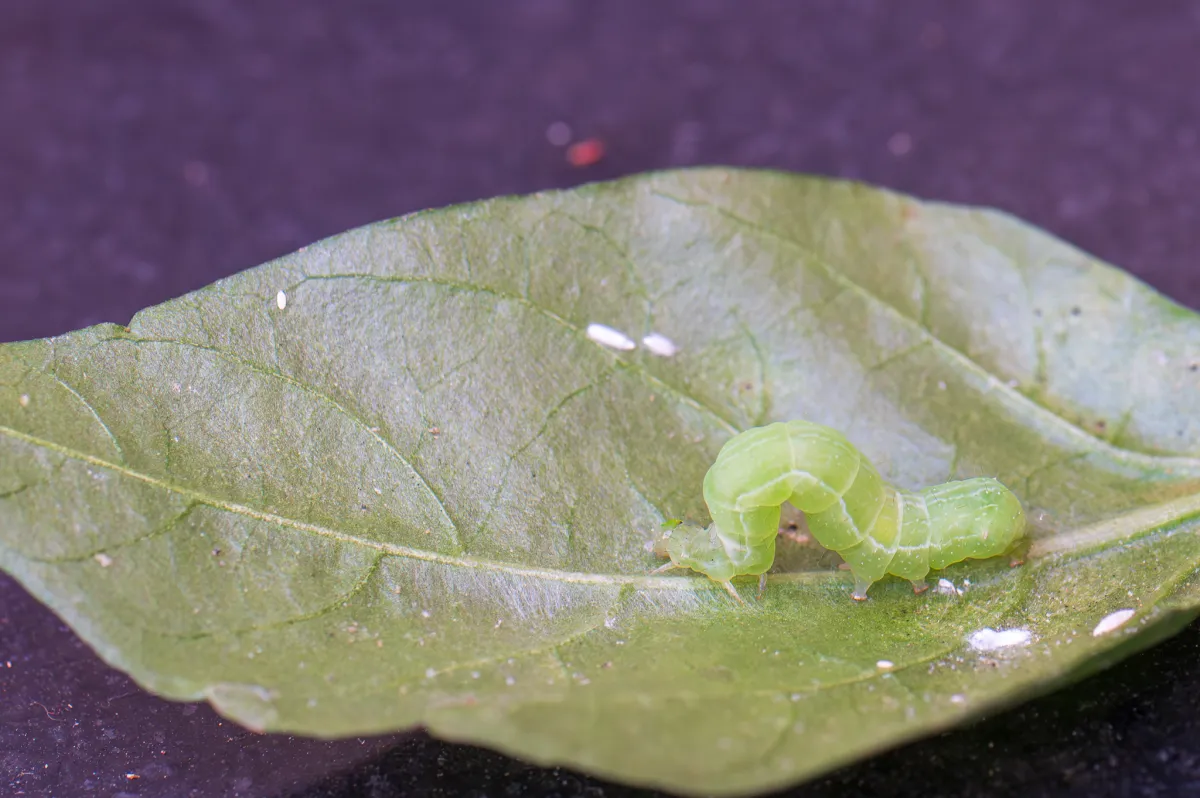I have been curious about what critter has been eating the leaves of my pimiento plants and leaving holes all over the place, some very large indeed.
I spotted something on the underside of one of the leaves and thought, ‘Aha, got you’. It was this caterpillar. Possibly the culprit.
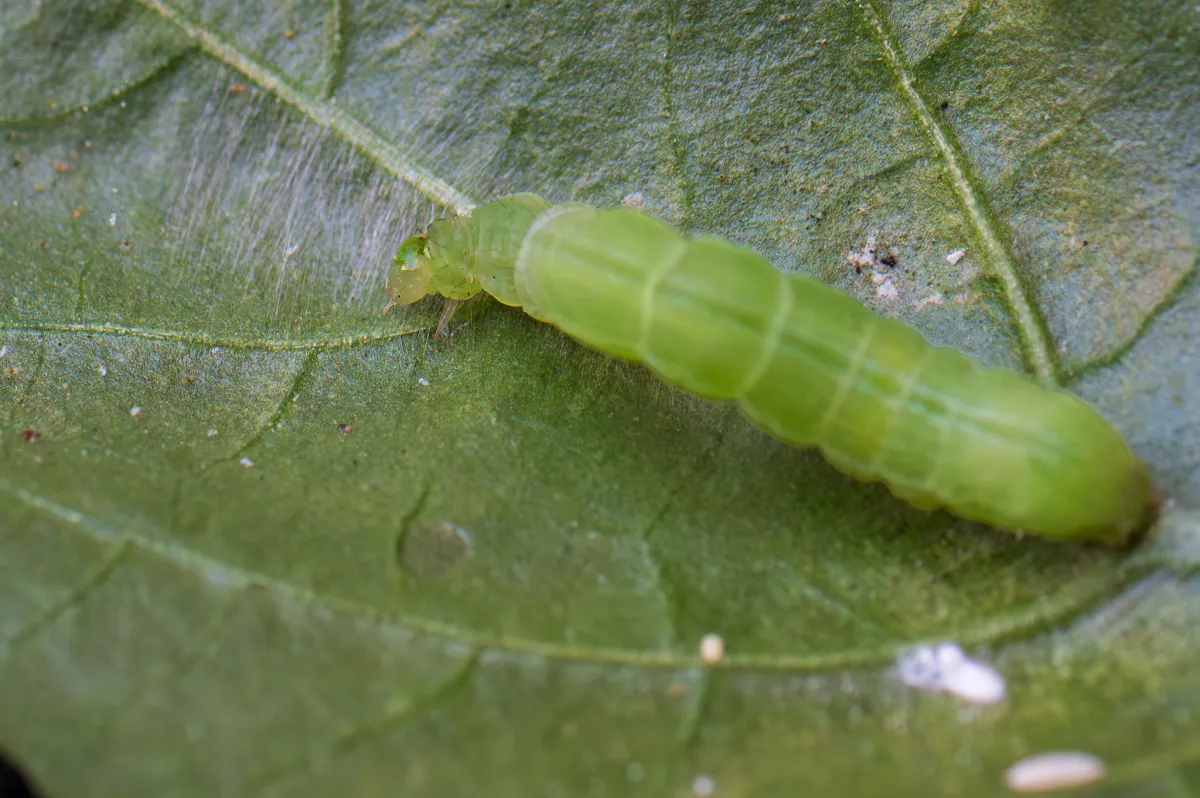
My research makes me believe that this is the caterpillar of the Silver Y moth, Autographa gamma, a migratory moth in the Noctiduidae family. The name relates to the silvery Y-shaped markings on each of the forewings.
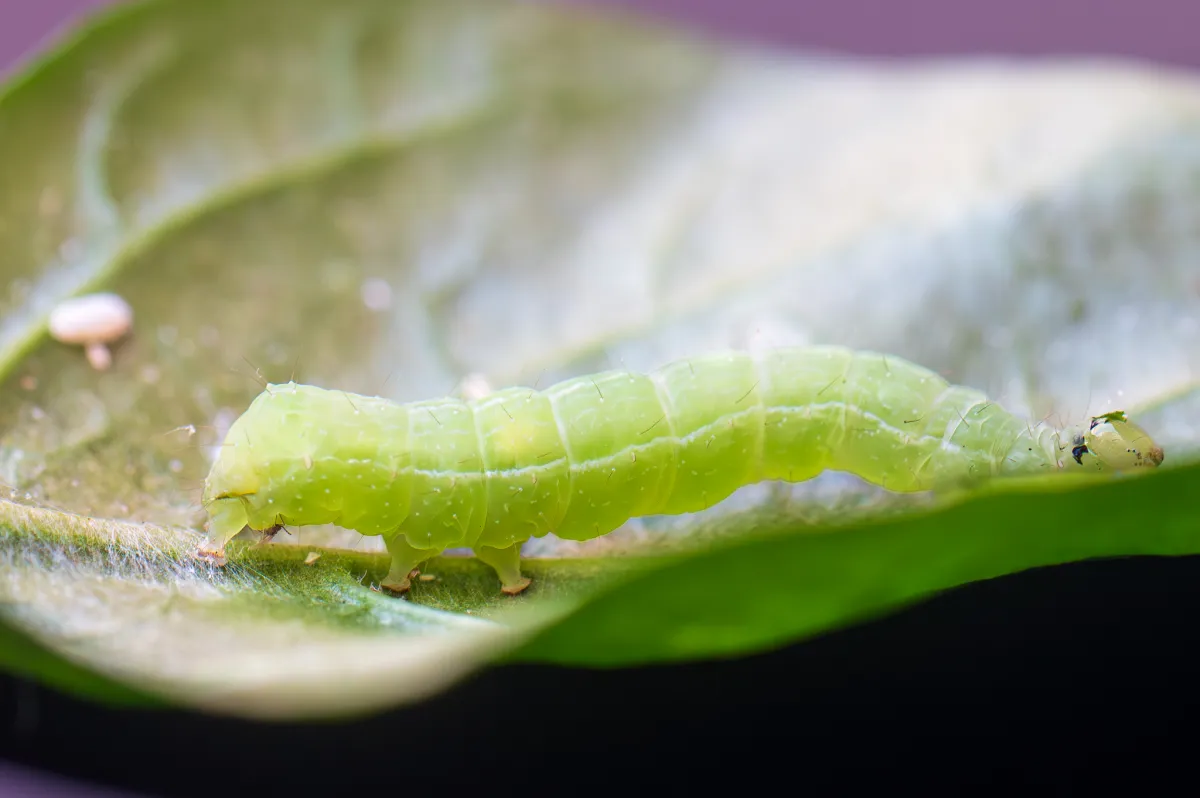
The species is widespread across Europe and over almost all the Palearctic including North Africa.
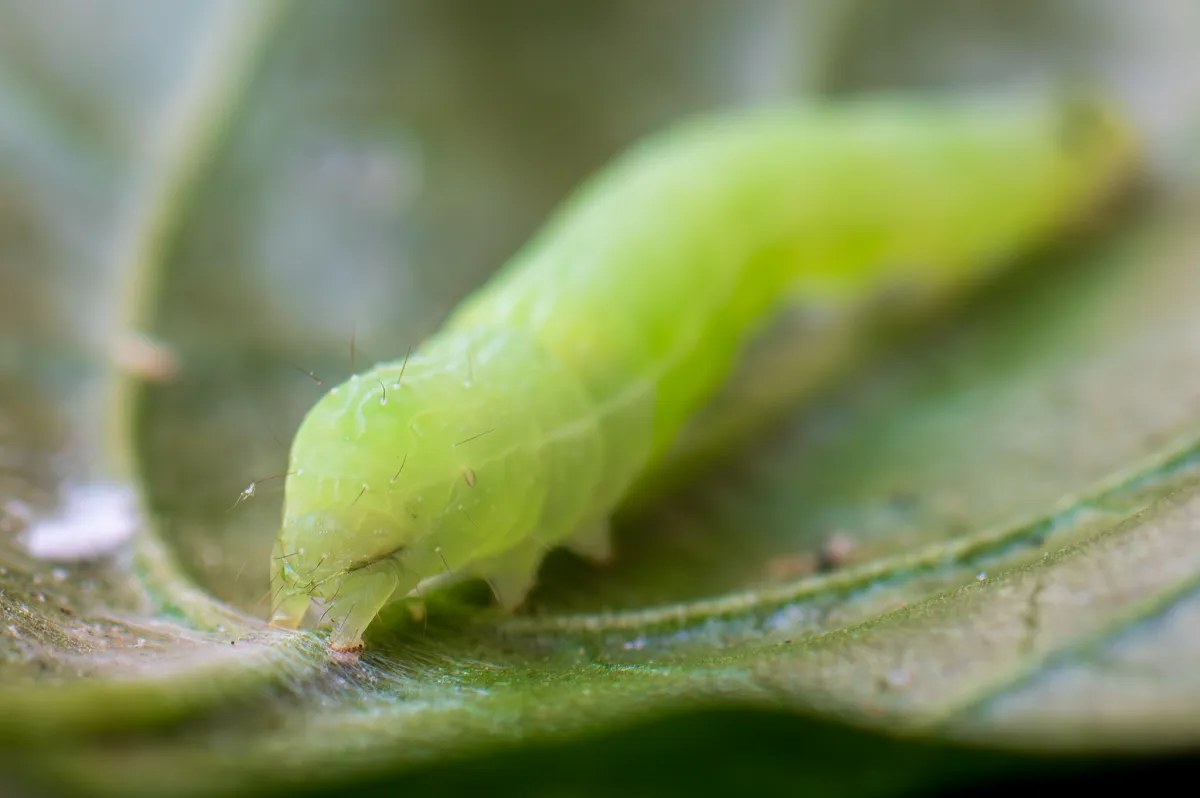
The larvae are about 30 mm long and are usually green with whitish markings. They feed on just about any low-growing plants (including my chillies!!!) and they can reduce crop yields by damaging leaves and are often considered to be a pest.
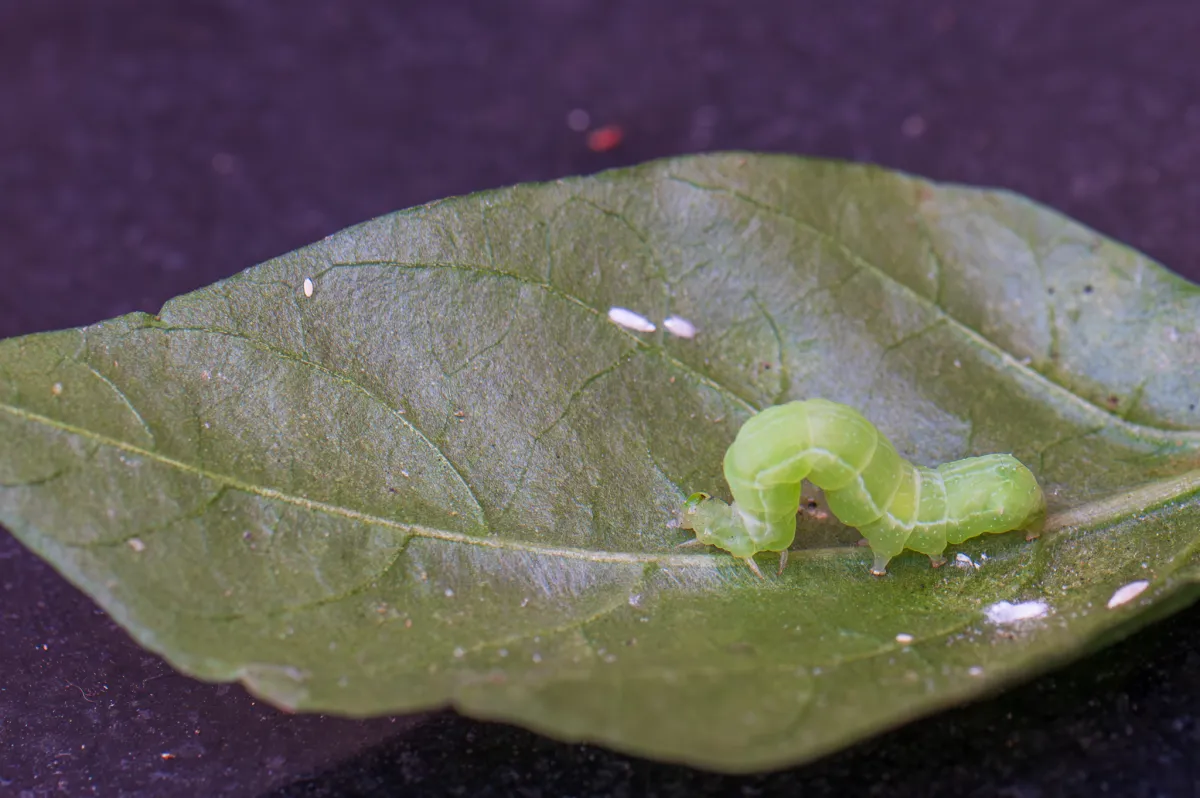
Because of the way they walk, arching their backs, they are often called ‘loopers’.
